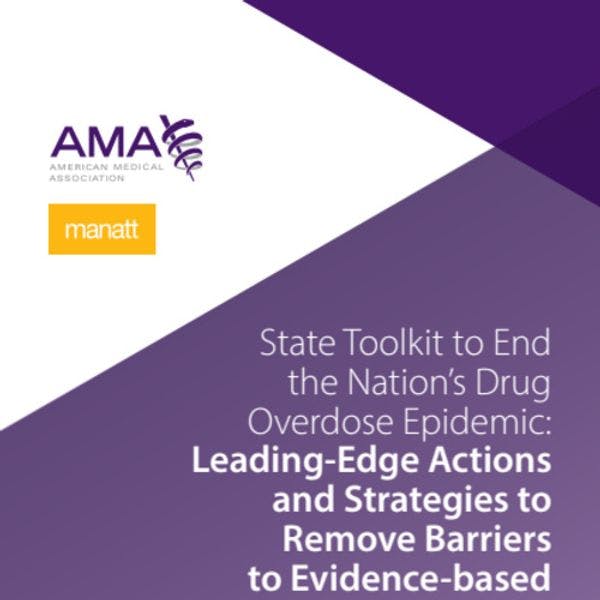State toolkit to end the nation’s drug overdose epidemic: Leading-edge actions and strategies to remove barriers to evidence-based patient care
By the American Medical Association
The US Centers for Disease Control and Prevention (CDC) reported that the predicted number of drug overdose deaths in the 12-month period ending in April 2021 exceeded 100,000 for the first time ever. Nationally, people aged 15–24 experienced the largest percentage increase in drug overdose death rates between 2019 and 2020 (49%), and deaths overall increased from April 2020 to April 2021 by nearly 30%.2 Across the country, 28 states had more than a 30% increase in overdose deaths in 2020 compared to 2019, including 10 that increased by more than 40%. Additional state-level reports detail hundreds of examples of how the epidemic has raged. The simultaneous tragedies of the COVID-19 pandemic and the drug overdose epidemic—two public health crises at once—have widely fed into the categorization of the drug overdose epidemic as “the epidemic inside a pandemic.”
Policymakers and other stakeholders must increase their efforts to end the drug overdose epidemic with targeted, evidencebased interventions and emerging best practices. The American Medical Association (AMA) and Manatt Health released a national policy roadmap in December 2020 with detailed recommendations for policymakers to take action. While there are many examples where states and others have taken some steps in the right direction, much more needs to be done to support evidence-based, comprehensive efforts.
The 2020 roadmap highlighted areas with opportunity for improvement, particularly in light of the ongoing and unprecedented public health crisis wrought by the COVID-19 pandemic. During development of this 2022 toolkit, the true extent of COVID-19’s impact on the drug overdose epidemic is just beginning to be realized.
The 2022 AMA-Manatt Toolkit builds on the 2020 roadmap by providing actionable resources that states can use to take specific actions in six policy areas:
- Increase access to evidence-based treatments to help patients with a substance use disorder (SUD).
- Ensure access to addiction medicine, psychiatry, and other trained physicians.
- Enforce mental health and substance use disorder (SUD) parity laws.
- Improve access to multidisciplinary, multimodal care for patients with pain.
- Expand harm reduction efforts to reduce death and disease.
- Improve monitoring and evaluation.
